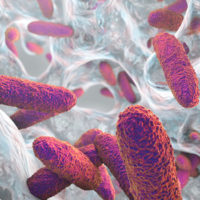A significant milestone in the U.S. Food and Drug Administration’s (FDA) juice safety program will occur in January 2004 when the final phase of implementation for the juice Hazard Analysis and Critical Control Point (HACCP) regulation takes effect. The regulation requires juice processors to use a HACCP system to analyze their processing operations for safety hazards that could occur in their juice products and to establish controls for any hazards likely to occur.
Processing under HACCP represents a significant change in the way juice processors carry out their operations and in the way regulators monitor the safety aspects of the processor’s operations. Both processors and regulators must step up to meet new challenges for a successful transition to the HACCP era. This article will review the significant progress and remaining challenges toward meeting the goal of successful HACCP based operations throughout the juice processing industry.
Cultivating Progress
HACCP is a well-established app-roach to ensuring the safety of processed food products. Its origins go back to the early days of the U.S. space program. FDA established HACCP requirements for seafood products in 1995 and the U.S. Department of Agriculture (USDA) followed with HACCP requirements for meat and poultry products in 1996.
In the wake of foodborne illness outbreaks associated with juice products, FDA in 1997 decided to initiate rulemaking requiring juice processors to apply HACCP principles to their operations. FDA finalized the juice HACCP regulation in January of 2001 with a three-year phase-in period based upon the size of the processor’s business. All businesses not classified as very small or small were required to comply with the requirements by Jan. 22, 2002. Small businesses were required to comply by Jan. 21, 2003. Very small businesses, the final group in the phased-in coverage, are required to comply with the juice HACCP regulation by Jan. 20, 2004. Very small businesses are defined as operations that meet one of the following criteria:
• Total annual sales of less than $500,000
• Total annual sales greater than $500,000 but total food sales less than $50,000
• Employ fewer than an average of 100 full-time equivalent employees and sell fewer than 100,000 units of juice in the United States
The very small business category includes some firms that grow their fruit, produce and package juice from that fruit, and sell some of the juice directly to the public, often right from their farm site. However, if such a business sells its juice exclusively to the public and does not sell or wholesale its juice to other businesses, it is not subject to the juice HACCP rule. Instead, it is required to place a warning label on the container if the juice has not been pasteurized or otherwise processed to ensure its safety. Many businesses that import juice from foreign countries into the U.S. also fall into the very small business category.In contrast, most processors in the other two categories purchase fruit from growers, process it into juice, and then package and wholesale the juice to other businesses for sale to the public.
Keeping Up with Training
Training in applying the principles of HACCP is required for all individuals who have significant safety related responsibilities in juice processing. This training must be at least equivalent to that received using a “standardized curriculum” recognized by the FDA, unless the person has gained equivalent HACCP training with on-the-job experience. Although FDA establishes the requirements for the training curriculum, the actual training function is performed by third parties or by processors themselves.
The standardized training curriculum was developed by a group of academic, industry and government experts assembled by the National Center for Food Safety and Technology (NCFST) at the Illinois Institute of Technology in June 2001. That group, known as the Juice HACCP Alliance, modeled the curriculum after the highly regarded Seafood HACCP Curriculum designed by the Seafood HACCP Alliance. The First Edition of the Juice HACCP Training Curriculum of the Juice HACCP Alliance was finalized in August 2002 and is available for purchase as a bound volume, or for downloading at no cost from the NCFST website (www.ncfst.iit.edu).
FDA addresses curricula for HACCP training of juice processors in a guidance document published in June 2003, entitled “Guidance for Industry: Standardized Training Curriculum for Application of HACCP Principles to Juice Processing.”[1] This guidance recognizes the First Edition of the Juice HACCP Alliance curriculum as the “standardized curriculum” for juice HACCP training purposes. The guidance states that juice processors are not required to use the Juice HACCP Alliance curriculum for training their personnel; however, if another curriculum is used it should be equivalent to the Juice HACCP Alliance curriculum in its coverage of the following several key components of HACCP:
• Biological, chemical and physical hazards;
• Applicability of Current Good Manufacturing Practices (cGMPs) and Sanitation Standard Operating Procedures (SSOPs);
• The Five Preliminary Steps of HACCP with application to juice processing;
• The Seven Principles of HACCP with application to juice processing; and
• FDA’s juice HACCP Regulation (21 CFR Part 120) and related FDA guidance documents.
Trade associations and other organizations that serve larger processors frequently have sizeable staffs with the specialized expertise to develop their own curricula for training their members in juice HACCP. However, the standardized curriculum is a significant resource for the very small processor because of its ready-to-use design. University extension faculty often provide training for these processors and the curriculum is easily integrated into a HACCP training course.
HACCP also markedly changes the way that regulators carry out inspections of juice processors and juice importers. This necessitated increased training of FDA’s field inspectors in conducting HACCP based inspections so they could effectively assess the processor’s compliance with the juice HACCP regulation. In September 2002, FDA issued a guidance document for training regulatory personnel in conducting juice HACCP inspections entitled Juice HACCP Regulator Training.[2] Processors can review this document to better understand how a HACCP inspection at their firm is likely to be conducted.
Juice HACCP Hazards and Controls Guide
In September 2002, FDA published a draft guidance document entitled Guidance for Industry: Juice HACCP Hazards and Controls Guide and requested public comment.[3] This guide contains information about known hazards that may occur in juice, such as illness causing microbial pathogens, as well as preventive measures processors can take to control these hazards and ensure that their products are safe. For example, FDA recommends pasteurization times and temperatures that have been validated to meet the 5-log pathogen reduction performance standard required by the regulation. The guidance also notes that juices that may contain the protozoan parasite Cryptosporidum parvum should receive a more severe thermal process than juices that may contain pathogenic bacteria such as Salmonella or E. coli O157:H7, because Cryptosporidium may be more resistant to thermal process treatments. This results in slightly different process recommendations for apple juice, for which Cryptosporidium is a potential hazard.
Additionally, the guide contains information about patulin, a mycotoxin produced by molds that occur on apples. Patulin could reach unsafe levels if rotten, moldy or damaged apples are used to make juice. In October 2001, FDA published a Compliance Policy Guide entitled Apple Juice, Apple Juice Concentrates, and Apple Juice Products–Adulteration with Patulin that established an action level for patulin in apple juice of 50 parts per billion (ppb).[4] Nonetheless, FDA has observed that some apple juice processors, particularly very small ones, may need to increase their awareness about the potential hazard of patulin and means of controlling this hazard. The Hazards and Controls Guide recommends measures processors can take to ensure patulin is not present at hazardous levels in their apple juice products. For example, not harvesting “drops,” (i.e., apples that have fallen to the ground in the orchard) for juice production is a measure that can significantly reduce patulin levels in the juice since dropped apples are much more likely to develop rotted portions in the fruit.
Another important topic discussed in the Hazards and Controls Guide is the proper cleaning of processing equipment between milk and juice runs in dairy plants that produce milk and juice on shared processing equipment. If proper cleaning of the equipment is not performed and milk residues on the equipment become components of juice, the milk protein could cause serious reactions in individuals who are allergic to milk. Proper cleaning should ensure that milk protein residues do not occur in juice products.
The Hazards and Controls Guide also contains examples of a hazard analysis and a HACCP plan for three juice types: a pasteurized apple juice, a fresh non-pasteurized orange juice, and a not-from-concentrate pasteurized orange juice. This guide is a valuable resource for processors in conducting their hazard analysis and developing a HACCP plan. FDA expects to publish this guidance in final in the near future.
Inspections
After some delay caused by the need to redeploy field resources to special assignments in the aftermath of the September 2001 terrorist attacks, FDA’s juice HACCP inspectional program will be fully operational in 2004 as very small processors and juice importers become subject to the regulation. FDA plans to conduct 500 inspections of domestic processors and 200 inspections of juice importers in 2004.
FDA recognizes the challenges to both processors and regulators of suddenly changing from the conventional approach to food safety regulatory monitoring to one based upon HACCP. Under HACCP, processors must demonstrably apply scientific principles to the identification and control of safety hazards in their food processing operations. Comprehensive and ongoing record keeping is also required to demonstrate to regulators that the HACCP system is operating in the intended manner. These features markedly differ from the regulatory monitoring system in place prior to HACCP, which was based upon the regulator’s observation of the processing operation and the collection and analysis of regulatory samples of product at the time of the inspection.
To date, FDA has assessed juice processors on the basis of whether they were making adequate progress toward the implementation of HACCP, giving processors an opportunity to remedy deviations from the regulatory requirements observed in the initial inspection where satisfactory progress has been made.
With the planned level of FDA inspectional activity for 2004, processors that have not already been inspected are likely to be inspected. In allocating its inspectional resources, FDA plans to give the highest priority to inspection of firms that produce non-pasteurized juice because these juices can be produced using novel processing methods which merit closer regulatory monitoring when they are being implemented in a HACCP system. A second priority will be inspections at firms that were found to have deviations during their first inspection.
Under the juice HACCP regulations, juice produced by foreign processors must be processed in compliance with the juice HACCP requirements, just as domestically produced juice must be. However, regulatory monitoring for imported juice products will largely be accomplished by FDA inspections of the juice importer’s records as opposed to FDA inspections of foreign processing facilities. The importer will be required to maintain records for FDA inspection that show that the imported juice was processed in conformity with the requirements of the juice HACCP regulation. Therefore, foreign juice processors that ship juice to the U.S., and their importers, should work together to ensure that the importer has the types of records and documentation that FDA will audit during an inspection as described in 21 CFR Part 120.14.
Juice with a Warning Label
As mentioned before, juice processors that sell their juice exclusively to the public, and do not wholesale their juice to other businesses for sale to the public, are not subject to the juice HACCP rule. Such firms are classified as retail firms and are exempted from coverage under the juice HACCP regulation. FDA determined that the unique nature of retail processing operations is such that it would not be appropriate to apply the HACCP requirements to retail processors of juice products. However, most states regulate retail juice processors under state regulations based upon FDA’s Model Food Code, a guidance document that describes appropriate controls that can be applied to reduce juice hazards at the retail level to ensure the safety of juice. FDA does require that packaged juice products produced by retail establishments either undergo a treatment designed to ensure an effective 5-log pathogen reduction, (just as juice subject to the HACCP regulation must undergo) or bear a warning label that explains that the juice has not been treated to ensure its safety and that it may contain harmful bacteria that can cause serious illness, especially in children, the elderly and persons with weakened immune systems.
As of Jan. 20, 2004, only packaged juice products produced by retail establishments will be permitted to be sold to the public with this warning label. All other packaged juice will be subject to the HACCP regulation and must be processed to ensure the safety of the juice. The differences in labeling may prompt questions from consumers, which juice processors should be prepared to answer. For example, some consumers may wish to avoid juice that is not processed to ensure its safety. They can be told that they need only check that the container they purchase does not bear the warning label. Not all pasteurized juices are required to be labeled as “Pasteurized,” and that the absence of the warning statement, rather than the presence of the word “Pasteurized” on the label will indicate that the juice has been treated to ensure its safety.
Restaurateurs and others selling juice may encounter similar questions. Juice not sold in packaged form, such as juice served by the glass at restaurants and juice bars, is not subject to either the HACCP regulation or to the warning label requirement. If the restaurant obtains packaged juice and serves it to customers by the glass, that juice is likely to have been made by a processor subject to the HACCP regulation and thus would have been treated for safety by the processor. However, consumers can always ask to make sure that the juice package does not bear the special warning label. Obviously, consumers should understand that juice squeezed and immediately served on site at a juice bar has not been treated to ensure its safety. FDA’s advice to consumers on juice safety is available on the agency’s website in a document entitled, What Consumers Need to Know About Juice Safety.[5]
HACCP Website and Additional Sources of Assistance
The CFSAN website (www.cfsan.fda.gov) contains a large section on both general HACCP issues as well as juice HACCP in its “HACCP” section. Included is a guidance document FDA issued in October 2002 discussing processing recommendations for achieving the 5-log pathogen reduction for retail establishments that may attain exemption from the warning label requirement. The document is titled Guidance for Industry: Exemptions from the Warning Label Requirement for Juice– Recommendations for Effectively Achieving a 5-Log Pathogen Reduction.[6]
An additional guidance document, Guidance for Industry: Bulk Transport of Juice Concentrates and Certain Shelf Stable Juices, published in April 2003, discusses circumstances in which FDA may exercise enforcement discretion with respect to the requirement to apply the 5-log pathogen reduction treatment in the facility where the final packaging of the juice occurs.[7] The guidance is limited to certain types of juice concentrates and certain shelf stable juices that are processed in one facility and transported in bulk to a subsequent facility where the final packaging occurs, and where the transport operation is done under conditions that preclude contamination of the juice during transport.
FDA has also published two “Questions and Answers” documents for the juice HACCP regulation in August 2001 and September 2003 to address inquiries the agency continues to receive about subjects, such as what products are covered by the regulation; imported juice; the hazard analysis; HACCP plans; and the 5-log pathogen reduction standard.[8]
There are other resources that processors and importers can access for assistance including trade associations, university extension agents, and federal and state regulatory agencies. Many private organizations, universities and other governmental organizations have been valuable partners to FDA in helping to transition to the era of HACCP-based juice processing.
Moving Forward
Many in the industry, academic and government communities have put forth remarkable efforts in advancing juice safety through the application of HACCP. As the implementation of juice HACCP reaches a significant milestone in January 2004, we can all reflect on how far we have come, and express confidence that we are well positioned to continue to move forward in ensuring the safety of our juice supply.
Michael E. Kashtock, Ph.D., is the Senior Advisor to the Director of the Division of Plant Product Safety in the FDA Center for Food Safety and Applied Nutrition. In his 25-year career with FDA, he has contributed to the agency’s food safety mission as a laboratory scientist, manager and regulatory policy expert.
References
Original reference links have expired. An update link at CFSAN for Juice HACCP is:
http://www.fda.gov/Food/FoodSafety/HazardAnalysisCriticalControlPointsHACCP/JuiceHACCP/default.htm
1. www.cfsan.fda.gov/~dms/juicgui9.html
2. www.cfsan.fda.gov/~comm/juiceman.html
3. www.cfsan.fda.gov/~dms/juicgui3.html
4. www.fda.gov/ora/compliance_ref/cpg/cpgfod/cpg510-150.htm
5. www.cfsan.fda.gov/~dms/juicsd.html
6. www.cfsan.fda.gov/~dms/juicgui6.html
7. www.cfsan.fda.gov/~dms/juicgui8.html
8. www.cfsan.fda.gov/~comm/juiceqa.html and at www.cfsan.fda.gov/~comm/juiceqa2.html




